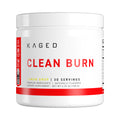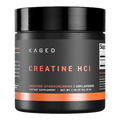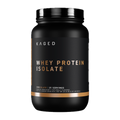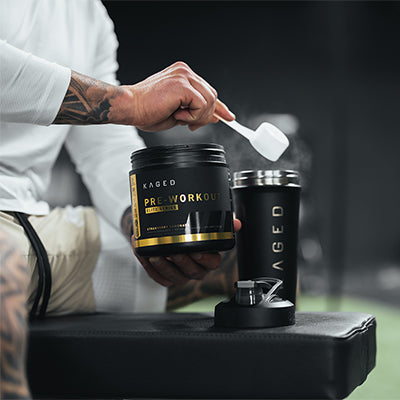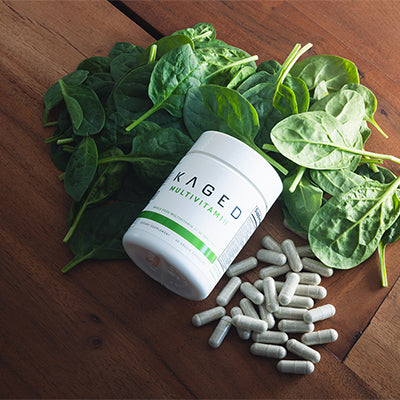Every once in a while there appears to be an unwarranted attack against a vitamin or nutrient. In this case, “a vitamin B3 delusion” has taken the fitness blogs, reddit, and twitter threads by storm.
Here’s what you should know about niacin, niacinamide, and vitamin B3 before training and in your pre-workout supplement.
The Basics of Vitamin B3: There are Two Very Different Forms
There are two primary forms of vitamin B3 and they are called Niacin and Niacinamide (Nicotinamide.)
Note: Niacinamide and nicotinamide are different names for the same molecule.
Niacinamide (nicotinamide), in the form of Nicotinamide adenine dinucleotide (NAD), is a coenzyme found in all living cells.
In fact, if you remember your high school biology, you may recognize NAD as a molecule from the Krebs cycle. This cycle is what allows our cells to use oxygen and glucose to make ATP.
In simple terms, niacinamide is an essential molecule for your cells.
The Five Major Vitamin B3 Biochemical Pathways:
- The tryptophan-kynurenic acid pathway;
- The mitochondrial ATP generation related abnormality;
- The poly (ADP-ribose) polymerase (PARP) pathway;
- The BDNF-TRKB Axis abnormalities;
- The genetic consequences of niacin deficiency.
(Source: Neural Regen Res. 2014 Aug 15; 9(16): 1509–1513.)
When it comes to workout performance, number two is what stands out here.
Why would we want to make sure we have vitamin B3 onboard in times of working out?
Well, without sufficient niacin your body can’t make optimal levels of ATP.
When working out, competing or seeking out peak performance, you depend on ATP to perform.
For this mechanistic reason, we include a modest 30mg dose of vitamin B3 as niacinamide (synonymous with nicotinamide) in our award-winning pre-workout, Pre-Kaged.

Why To Avoid Ordinary Niacin In Your Pre-Workout
As many in the health and fitness industry have rightly pointed out, ordinary niacin (that is, not niacinamide), has traditionally been used as a “flushing” ingredient.
What does this mean?
Well, ordinary niacin causes a vasodilator effect, particularly of the skin. That means your skin can swell with extra blood, and can give you a tingling sensation and a “flushing” feeling.
This makes it FEEL like your pre-workout is doing something. In other words, it’s just a trick used to get you to feel like the pre-workout is effective. If you see niacin used in a pre-workout, the next ingredient to check is Beta-Alanine, the ingredient known for the “itch.”
If you don’t see a scientifically tested dose (at least 1.2g) of Beta-Alanine, that’s a sign for further speculation that they’re replacing well-researched, effective ingredients for gimmicks like niacin.
The Bottom Line: You Must Distinguish Between Niacin and Niacinamide
Ordinary niacin causes this “flushing” sensation,” while niacinamide does not. The flushing form has not shown to provide any training benefits.
So when you’re looking at niacin (Vitamin B3) in your pre-workout, niacinamide is the form you want to look for, NOT ordinary niacin.
If your pre-workout just says niacin, then you’re getting the flushing form, NOT the form that plays a critical role in the Krebs Cycle and ATP production.
Common Questions We Get About Niacin in Pre-Workout
What Does Niacin Do in Pre-Workout?
As mentioned, it depends on the form. Ordinary niacin gives you a “flushing” feeling that may make your skin itch, but it won’t have any performance benefits.
The form niacinamide, on the other hand, is a key precursor to NAD, which is essential to energy production and the production of ATP.
Does Niacin Belong in a Multivitamin?
As mentioned, ordinary niacin in pre-workouts may not have the benefit you’re looking for. At super doses the flushing effect is mostly for cosmetics but at typical doses found in foods, it’s a normal and important vitamin.

Kaged Multivitamin, our whole-food multi, includes niacin sourced from sunflower seeds at an ordinary dose, and therefore a dose that won’t cause the flushing sensation.
*These statements have not been evaluated by the Food and Drug Administration. This product is not intended to diagnose, treat, cure or prevent any disease.

